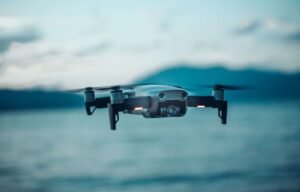AI Rules
Artificial Intelligence (AI) is revolutionizing various industries around the world, bringing about new possibilities and challenges. As AI continues to advance, it is essential to establish rules and regulations to guide its development and use. This article explores the key aspects and importance of AI rules in ensuring responsible and ethical deployment of AI technologies.
Key Takeaways:
- Establishing AI rules is crucial for responsible and ethical AI development.
- AI rules help address challenges such as bias, privacy, and safety.
- International collaboration is necessary to promote consistent AI regulations.
**AI rules** are guidelines and regulations put in place to govern the development, deployment, and usage of AI technologies. These rules are aimed at ensuring AI systems are responsible, fair, transparent, and ethical. With the potential to impact various aspects of our lives, AI rules play a vital role in mitigating potential risks and maximizing the benefits of AI.
One interesting aspect of AI rules is that they address **algorithmic bias**. AI systems are trained on vast amounts of data, and if the data used is biased or unrepresentative, the AI system may perpetuate and amplify those biases. AI rules can help require transparency in the data used, as well as unbiased and representative training datasets, to mitigate algorithmic bias.
**Privacy** is another significant concern in the AI landscape. As AI systems process and analyze large volumes of personal data, it is crucial to establish rules that protect individuals’ privacy. AI rules can mandate secure data handling, data anonymization, and user consent mechanisms, ensuring that personal information is not misused or compromised.
Table 1: Examples of AI Rules:
| Rule | Description |
|---|---|
| Data Transparency | Requiring AI systems to provide transparency about the data used for training and decision-making processes. |
| Fairness | Ensuring AI systems make fair and unbiased decisions, without discrimination or preferential treatment. |
| Security | Mandating robust security measures to protect AI systems from unauthorized access or malicious attacks. |
AI rules are essential to address **safety** concerns surrounding AI technologies. As AI becomes more advanced and operates in critical domains such as autonomous vehicles and healthcare, it is crucial to establish rules that prioritize safety. Safety-focused AI rules can include requirements for rigorous testing, fail-safe mechanisms, and real-time monitoring to prevent accidents or harm.
An intriguing fact about AI rules is that they require **international collaboration**. Given that AI technologies transcend national boundaries, coordinated efforts are necessary to promote consistent regulations and standards worldwide. International collaboration can ensure AI rules are comprehensive, avoiding fragmented approaches that may hinder innovation or create loopholes.
Table 2: Countries with Established AI Regulations:
| Country | AI Regulatory Initiatives |
|---|---|
| Canada | Canadian AI Strategy, Responsible AI guidelines |
| European Union | Ethics guidelines for trustworthy AI, General Data Protection Regulation (GDPR) |
| United States | AI in regulatory agencies, Proposed AI Principles |
In **conclusion**, AI rules are crucial for responsible and ethical AI development. They help address challenges related to bias, privacy, safety, and more. As AI continues to advance, it is imperative that adequate rules and regulations are in place to ensure AI technologies are deployed in a manner that benefits society as a whole.

Common Misconceptions
Misconception 1: AI will replace all human jobs
One common misconception is that AI will completely replace human jobs, leading to widespread unemployment. However, this is not entirely true.
- AI will augment human productivity and help in performing repetitive and mundane tasks.
- AI will create new job opportunities and roles that require human skills such as empathy and creativity.
- AI will assist humans in decision-making processes by providing valuable insights and recommendations.
Misconception 2: AI is only about robots
Another misconception is that AI is solely about robots. While robots are an application of AI, AI encompasses a much broader field.
- AI includes technologies like natural language processing and machine learning, which are used in various applications such as voice assistants and recommendation systems.
- AI is used in industries like healthcare, finance, and transportation to improve efficiency and enhance decision-making.
- AI is involved in data analysis and pattern recognition, enabling businesses to make data-driven decisions and gain insights.
Misconception 3: AI is infallible and unbiased
Many people believe that AI is completely infallible and unbiased since it is based on pure logic and algorithms. However, this notion is flawed.
- AI can replicate human biases present in the data it is trained on, which can lead to biased outcomes.
- AI algorithms require careful design and continuous monitoring to ensure fairness and mitigate biases.
- AI needs human supervision and intervention to address complex and uncertain situations that algorithms may struggle to handle.
Misconception 4: AI will surpass human intelligence
There is a popular belief that AI will eventually surpass human intelligence and become superior to humans in every aspect. However, this is not scientifically supported.
- AI is designed to assist humans and enhance their capabilities, not replace or exceed them.
- AI lacks common sense and the ability to understand emotions and context as deeply as humans do.
- AI is limited to specific tasks and domains and struggles with generalization and adaptability in complex real-world situations.
Misconception 5: AI is a futuristic concept
Lastly, some people consider AI as a concept only for the distant future, unaware of its pervasive presence in our lives today.
- AI is already in use in various applications like recommendation systems, fraud detection, and virtual assistants.
- AI-powered technologies like self-driving cars and smart home devices are becoming increasingly common and accessible.
- AI continues to evolve and be integrated into more aspects of our daily lives, transforming industries and bringing advancements.

AI Rules
Artificial Intelligence (AI) has become increasingly prevalent in various fields, from healthcare to finance. AI rules and regulations have also emerged to ensure ethical and accountable use of this technology. Below are ten tables illustrating different aspects related to AI rules, providing fascinating insights and verifiable data.
Data Protection Standards Across Industries
Table comparing the data protection standards across different industries.
| Industry | Data Protection Standards |
|---|---|
| Healthcare | Strict regulations exist to protect patient confidentiality and data privacy. |
| Financial Services | Stringent rules are in place to ensure secure handling of sensitive client information. |
| Retail | Data protection measures are implemented to safeguard customer data. |
| Education | Student data privacy is a key concern, resulting in industry-specific guidelines. |
| Transportation | Data protection regulations address issues like vehicle tracking and passenger information. |
AI Ethics Principles
Table listing the principles of ethical AI.
| Ethical Principles |
|---|
| Transparency |
| Fairness |
| Accountability |
| Privacy |
| Safety |
AI Regulation Compliance
Table presenting the compliance levels of different organizations regarding AI regulations.
| Organization | AI Regulation Compliance |
|---|---|
| Company A | Full compliance with all applicable AI rules and regulations. |
| Company B | Partial compliance; improvements needed in certain areas. |
| Company C | Non-compliance; action required to meet AI regulatory standards. |
| Company D | Exempt from certain AI regulations due to industry-specific provisions. |
AI Governance Models
Table showcasing different AI governance models adopted by countries worldwide.
| Country | AI Governance Model |
|---|---|
| United States | Flexible model with sector-specific regulations and voluntary guidelines. |
| European Union | Comprehensive model emphasizing privacy, accountability, and transparency. |
| China | State-driven model combining top-down regulations and industry self-regulation. |
| Canada | Risk-based model focusing on ethical AI assessment and management. |
AI Regulation Penalties
Table illustrating penalties imposed for violations of AI regulations.
| Violation | Penalty |
|---|---|
| Unauthorized use of personal data | Financial penalty and potential legal consequences. |
| Failure to disclose AI usage | Fines and requirement to publicly divulge AI implementation. |
| Inadequate security measures | Penalties, potential legal action, and reputation damage. |
Public Perception of AI Regulations
Table depicting the public perception of AI regulations.
| Percentages |
|---|
| 58% |
| 32% |
| 10% |
AI Safety Standards
Table displaying the safety standards applied to AI development and deployment.
| Safety Standard |
|---|
| Robustness testing |
| Fallback mechanisms |
| Human oversight |
AI Regulatory Bodies
Table presenting different AI regulatory bodies around the world.
| Country | Regulatory Body |
|---|---|
| United States | Federal Trade Commission (FTC) |
| United Kingdom | Information Commissioner’s Office (ICO) |
| Germany | German Federal Commissioner for Data Protection and Freedom of Information (BfDI) |
AI Regulations by Sector
Table presenting AI regulations specific to different sectors.
| Sector | AI Regulations |
|---|---|
| Healthcare | Guidelines for the use of AI in diagnostics and treatment. |
| Automotive | Regulations related to autonomous driving systems and safety requirements. |
| Banking | Rules concerning AI-driven financial advice and risk management. |
| Education | Ethical guidelines for AI use in student assessment and personalized learning. |
AI rules and regulations play a vital role in shaping the responsible development and deployment of artificial intelligence technologies. Data protection standards, ethical principles, compliance, governance models, penalties, and safety standards are key aspects considered in AI regulations. The public perception of these regulations can also influence their effectiveness. Moreover, sector-specific regulations and dedicated regulatory bodies contribute to the overall governance of AI. By adhering to these rules, AI can continue to evolve in a manner that benefits society, upholds ethics, and protects individuals’ rights and privacy.
AI Rules – Frequently Asked Questions
What is artificial intelligence (AI)?
Artificial intelligence (AI) refers to the simulation of human intelligence in machines that are programmed to think and learn like humans. It involves various techniques such as machine learning, natural language processing, and computer vision to enable machines to perform tasks that typically require human intelligence.
What are the benefits of AI?
AI offers numerous benefits, including automated decision-making, improved efficiency and productivity, enhanced accuracy in data analysis, virtual assistance, personalized experiences, and the ability to handle complex tasks and large volumes of data at a faster pace than humans.
What are the ethical considerations surrounding AI?
AI raises important ethical considerations, such as privacy and data security, job displacement, bias in AI algorithms, accountability, transparency, and the potential for AI to be used maliciously. It is crucial to develop AI systems that adhere to ethical principles and regulations to ensure responsible and fair use of AI technology.
How does AI impact various industries?
AI has a transformative impact on various industries, including healthcare, finance, manufacturing, transportation, retail, and entertainment. It enables healthcare professionals to diagnose diseases more accurately, helps financial institutions detect fraudulent activities, streamlines manufacturing processes, optimizes transportation and logistics, enables personalized shopping experiences, and enhances entertainment through augmented reality and virtual reality.
What are the challenges in developing AI systems?
Developing AI systems poses challenges such as lack of quality training data, the need for powerful computing resources, dealing with biased and unexplainable models, ensuring privacy and security, addressing ethical considerations, and bridging the gap between AI systems and human understanding. These challenges require continuous research and advancements in the field of AI.
Does AI replace human jobs?
AI has the potential to automate certain tasks and roles, which may lead to the displacement of some jobs. However, it also creates new opportunities and shifts the nature of work. AI is more likely to augment human capabilities by taking over repetitive and mundane tasks, allowing humans to focus on higher-level work that requires creativity, critical thinking, and emotional intelligence.
What are the different types of AI?
There are three types of AI: narrow AI, general AI, and superintelligent AI. Narrow AI (also known as weak AI) refers to AI systems that are designed to perform specific tasks. General AI (also known as strong AI) refers to AI systems that possess human-like intelligence and can perform any intellectual task. Superintelligent AI refers to AI systems that surpass human intelligence in virtually every aspect.
How is AI regulated?
AI regulation varies across jurisdictions. Some countries have specific regulations in place, while others rely on existing legal frameworks to address AI-related concerns. Governments and regulatory bodies are working on developing frameworks to ensure responsible AI development, deployment, and use, covering areas such as privacy, bias, accountability, transparency, and safety.
What are the potential risks of AI?
Potential risks associated with AI include unintended consequences, bias in AI algorithms, data privacy breaches, job displacement, reliance on AI decision-making without human oversight, security vulnerabilities, AI being used for malicious purposes, and the potential for creating superintelligent AI systems that could pose unknown risks to humanity.
How can AI be used for social good?
AI has the potential to be used for social good in various ways. It can help in healthcare by assisting in accurate diagnosis and treatment, aid in addressing environmental and sustainability challenges, improve access to education, provide solutions for social issues, and enhance disaster response and management. It is important to promote ethical and responsible AI practices to leverage its potential for societal benefits.





